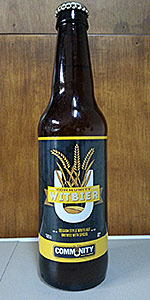
These soft, supple cheeses appreciate the firm carbonation of wheat beer, and they match the beer in modest flavor intensity. Bernardus Witbier Widmer Brothers Hefeweizen.Ĭheese affinities: To match the understated personality of a wheat beer, look primarily to young, fresh cheeses with simple buttery or milky flavors. They may be cloudy or clear, but most examples will conform to the European model of pale color, modest alcohol, light hopping, and restrained bitterness.īeers to try: Allagash White Anchor Brewing Summer Beer Ayinger Ur-Weisse Blanche de Bruxelles Franziskaner Hefe-Weisse Hitachino Nest White Ale New Belgium Sunshine Wheat Ommegang Witte Pyramid Hefeweizen Schneider Wiesen Edel-Weisse St. They may or may not have Belgian-style spicing (check the label) or the banana and clove scent attributable to German yeasts. These pale amber beers have a more layered scent of banana, vanilla, and caramel and can have a slightly sour finish.Īmerican wheat beers march to their own drummer, of course.
#WITBIER CALIFORNIA BREWERIES PLUS#
A few breweries make a dunkelweizen (“dark wheat” beer), using wheat plus darker malts. They have the cloudiness, prickly carbonation, and low bitterness of other wheat beers and no noticeable hops aroma. Their signature fragrance suggests banana, cloves, and yeast, reminiscent of a slice of warm banana bread. Unlike their Belgian counterparts, these beers aren’t spiced. In the German tradition, the term weissbier (“white beer”) or hefeweizen (“yeast wheat”) indicates a brew made from at least 50 percent malted wheat. German and German-style wheat beers have their own nomenclature. Beers with blanche (French for “white”) in the name are likely to be either witbiers from the French-speaking southern half of Belgium or Belgian-style witbiers from the New World.
#WITBIER CALIFORNIA BREWERIES FULL#
Witbiers have a creamy mouthfeel a fine, full effervescence and a dry finish. Some tasters discern a floury fragrance or the scent of cooked pasta, probably from the unmalted wheat used in the brew.

The aroma from these seasonings is subdued but detectable, along with other fruity notes, a lemony tartness, and a faint honeyed scent. The classic Belgian witbier (Flemish for “white beer”) is brewed with spices and other fragrant additions, typically dried bitter-orange peel and coriander. Their appeal lies in their drinkability and freshness, welcome qualities at a warm-weather lunch or at the start of a meal.Īnd now for the differences. Brewers use a light hand with hops to keep from dominating the subtle malt, so most wheat beers aren’t hugely aromatic. Traditional recipes rely on pale malts-in some brews, the wheat isn’t malted at all-so wheat beers don’t offer much, if any, toast or toffee aroma. Many are unfiltered, with a hazy or even cloudy aspect. Most wheat beers have a pale straw to pale gold hue. High in protein, the wheat contributes a silky, viscous texture and an especially luxuriant head. More typically, wheat accounts for 30 to 50 percent of the grain base, with malted barley, and occasionally oats, making up the rest. American, Belgian, and German approaches have some aspects in common, but noticeable differences, too.ĭespite their name, wheat beers are rarely made entirely from wheat. Many brewers make wheat beer-some year-round-and styles vary greatly. These popular pale brews have an easy quaffability thanks to their relatively low alcohol, brisk effervescence, and modest bitterness. Style notes: When the occasion calls for a thirst-quenching beverage, many beer lovers reach for a wheat beer.

Wheat Beer, Witbier, Weissbier, and Hefeweizen


 0 kommentar(er)
0 kommentar(er)
